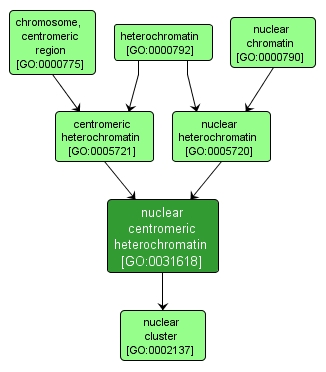GO TERM SUMMARY
|
| Name: |
nuclear centromeric heterochromatin |
| Acc: |
GO:0031618 |
| Aspect: |
Cellular Component |
| Desc: |
A region of heterochromatin located near the centromere of a chromosome in the nucleus. |
Synonyms:
- nuclear centric heterochromatin
|
|

|
INTERACTIVE GO GRAPH
|














